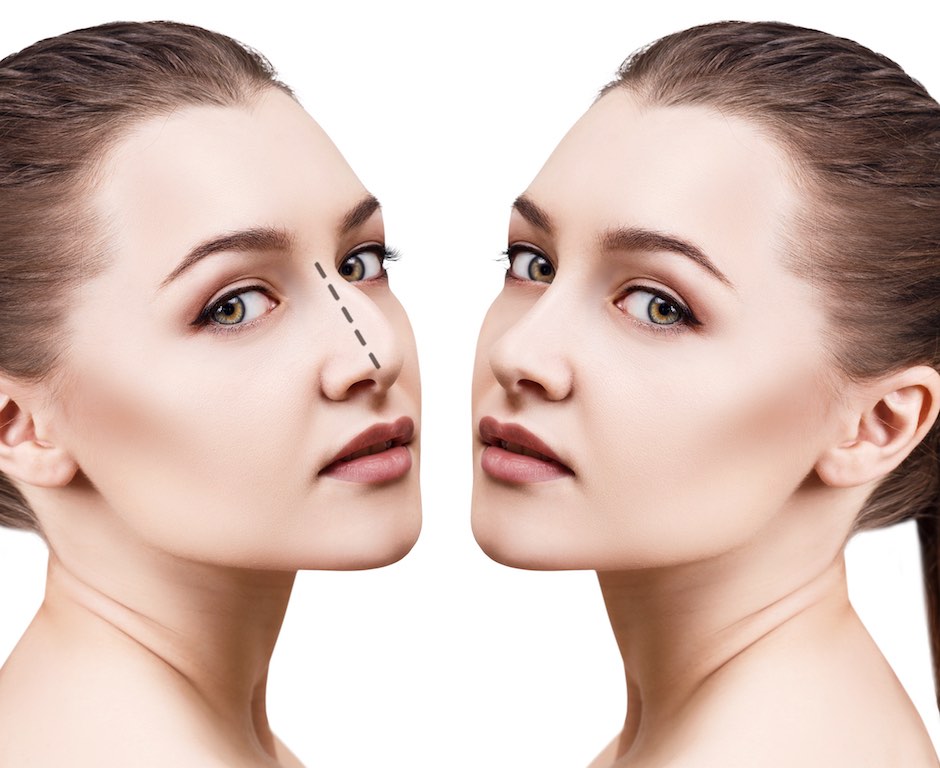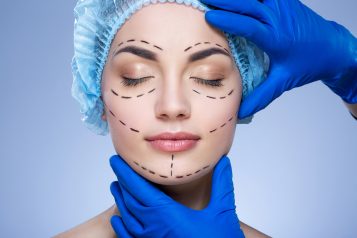Editor’s Note: Haute Beauty partner Dr. Samuel Lin joined with a fellow doctor to talk to us about Preservation Rhinoplasty, a new nose job procedure.
Preservation Rhinoplasty
Hassan Alnaeem MD FRCSC, Samuel Lin MD FACS
 Photo Credit: www.shutterstock.com
Photo Credit: www.shutterstock.com
What is preservation rhinoplasty?
Preservation rhinoplasty is a new (but not so new) chapter in rhinoplasty history. Its underpinnings were described more than a century ago by surgeons named Drs. Goodale, Cottle, and Lothrop, and just as the “open” approach transformed rhinoplasty surgery decades ago, preservation rhinoplasty is similarly transformative, leading surgeons to potentially rethink traditional dogma1 and relates to preserving as much of the nasal structures during rhinoplasty.
What makes preservation rhinoplasty different than traditional rhinoplasty?
It is a different approach from the traditional rhinoplasty concept that centers upon removing bone and cartilage and then building the structure of the nose to one more of a preservation approach2. The hump removal with a traditional rhinoplasty alters the mid-portion of the nose which is a critical area to preserve to prevent functional and aesthetic problems1,3.
What is the major advantage following preservation rhinoplasty compared to the traditional rhinoplasty?
Preservation rhinoplasty gives a different approach compared to the traditional rhinoplasty and faster recovery4. Since the primary reason that patients do not seek rhinoplasty surgery is the fear of a bad result (“nose job” look), preservation rhinoplasty may reduce this risk and lead to a more natural look5 and simpler revisions if needed rather than major secondary procedures requiring rib cartilage grafts2.
What are the components of preservation rhinoplasty surgery?
It comprises elevating the skin immediately above the bone and cartilage, preserving the bone and cartilage of the dorsum and alar cartilage with minimal excision and using sutures to reshape the cartilage. Instead of direct hump removal that leads to an open roof deformity and cartilage reconstruction in traditional rhinoplasty, preservation rhinoplasty maintains the nasal bridge area while eliminating the dorsal hump through the use of septal resection under the hump followed by osteotomies (bone cuts) to reduce the height of the dorsal line without altering its normal anatomy. Also, by preserving the entire cartilage of the ala during preservation rhinoplasty, this will maintain function, reduce potential problems and potentially makes any revisional procedures easier. The shape of the tip is performed by suture techniques1,6.
How would the hump disappear if it is not removed as in the traditional rhinoplasty?
The hump disappears by removing 2-3 mm strip of the septum cartilage under the hump, treating the remaining cartilage at the dorsum and resetting the bone at the base of the nose.1
Will my hump come back?
A recent article showed a 12-15 % risk of the hump coming back within 4 months. Authors have advocated to additional maneuvers to reduce the risk of hump recurrence.7-9
Will this technique narrow a wide nose deformity?
Yes, this technique allows narrowing of the nose by narrowing the nasal bones at base of the nose near the cheek area5.
How about defining the tip of the nose, projection and rotation?
As mention earlier, preservation rhinoplasty procedures define and correct tip rotation and projection through suture technique with minimal to no cartilage removal. Also, ligaments are repaired in preservation rhinoplasty which is a critical ligament for supra tip definition and tip projection1.
Who is the perfect candidate patient for preservation rhinoplasty?
Patients with an over projected and straight dorsum, small bumps of the bridge of the nose, and certain shaped nasal bones (humps) are ideal for preservation rhinoplasty.
What are the contraindications to perform preservation rhinoplasty?
Surgeons have different techniques for treating the nose, and this is one approach of several types of changing the shape of the nose. Contraindications for preservation rhinoplasty include bleeding disorders, allergies, wound-healing problems, smoking, drug addiction, severe traumatic nose deformity, and completely low nasal bridges5.
- Kosins AM, Daniel RK. Decision Making in Preservation Rhinoplasty: A 100 Case Series With One-Year Follow-Up. Aesthet Surg J. 2019.
- Daniel RK. The Preservation Rhinoplasty: A New Rhinoplasty Revolution. Aesthet Surg J. 2018;38(2):228-229.
- Saban Y, Daniel RK, Polselli R, Trapasso M, Palhazi P. Dorsal Preservation: The Push Down Technique Reassessed. Aesthet Surg J. 2018;38(2):117-131.
- Goksel A, Saban Y. Open Piezo Preservation Rhinoplasty: A Case Report of the New Rhinoplasty Approach. Facial Plast Surg. 2019;35(1):113-118.
- Tas S. Dorsal Roof Technique for Dorsum Preservation in Rhinoplasty. Aesthet Surg J. 2019.
- Ahmad J. Commentary on: Decision Making in Preservation Rhinoplasty: A 100 Case Series With One-Year Follow-Up. Aesthet Surg J. 2019.
- Turin SY, Gosain AK. Discussion: The Probable Reasons for Dorsal Hump Problems following Let-Down/Push-Down Rhinoplasty and Solution Proposals. Plast Reconstr Surg. 2019;144(3):388e-389e.
- Toriumi DM. Discussion: The Probable Reasons for Dorsal Hump Problems following Let-Down/Push-Down Rhinoplasty and Solution Proposals. Plast Reconstr Surg. 2019;144(3):386e-387e.
- Tuncel U, Aydogdu O. The Probable Reasons for Dorsal Hump Problems following Let-Down/Push-Down Rhinoplasty and Solution Proposals. Plast Reconstr Surg. 2019;144(3):378e-385e.
For more on Dr. Lin, visit his Haute Beauty profile.
For more information, visit Dr. Brian A. Levine's social media:

























